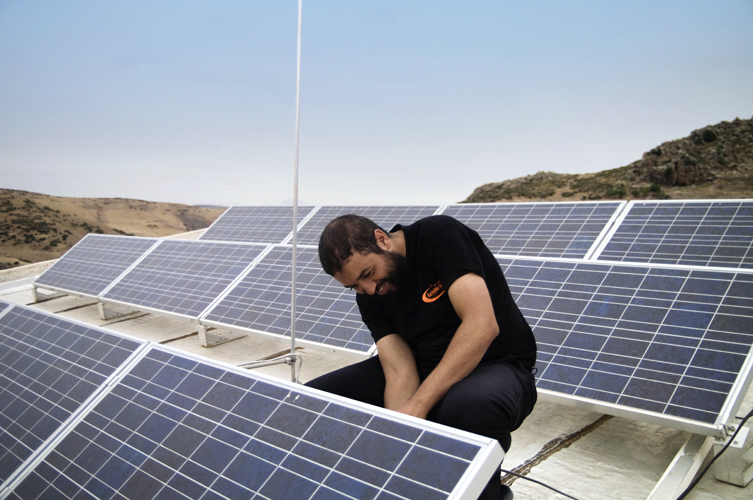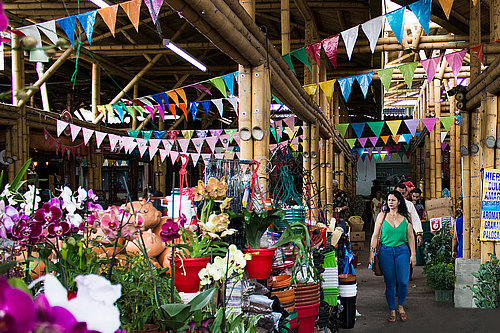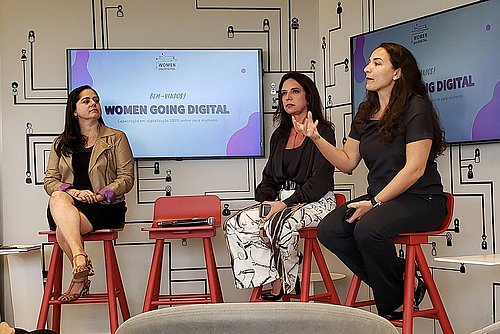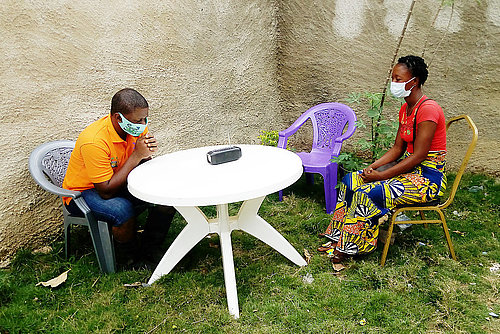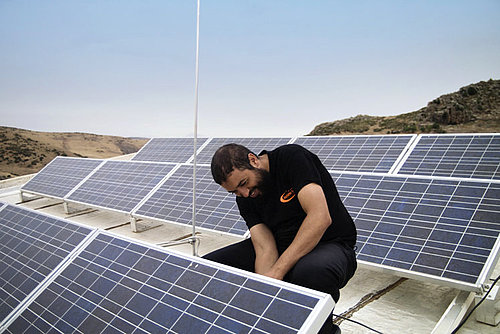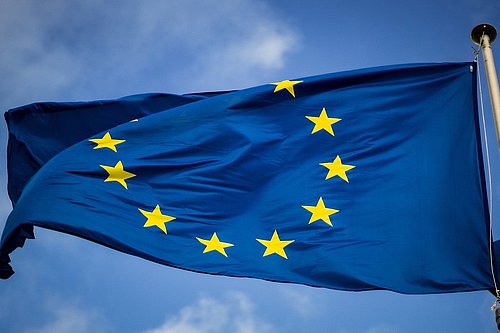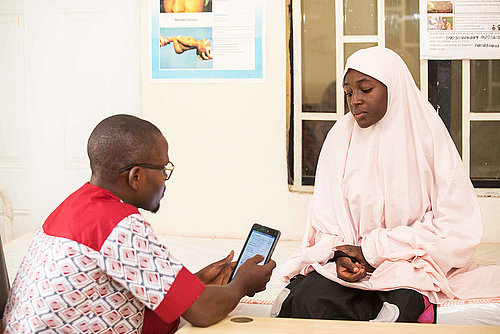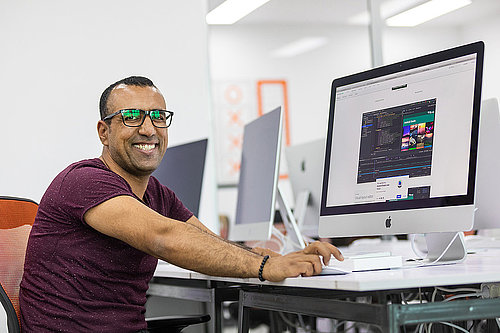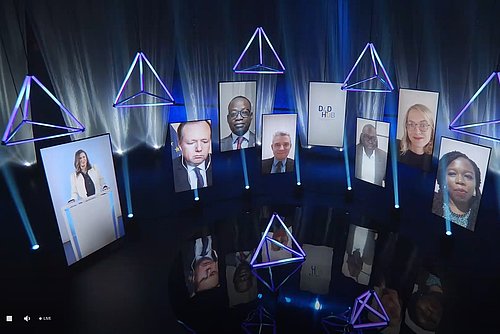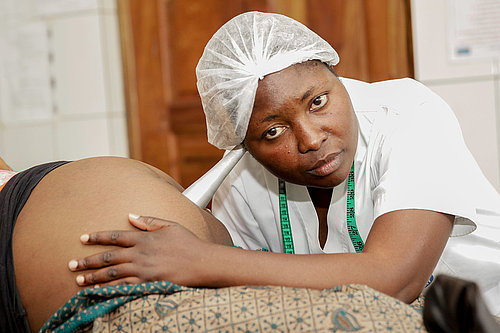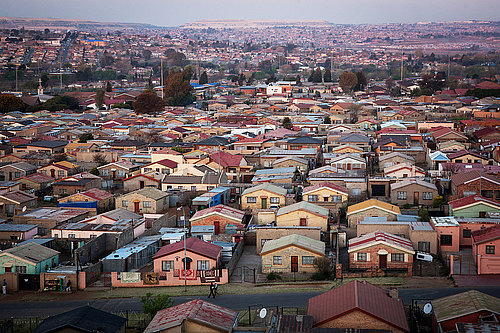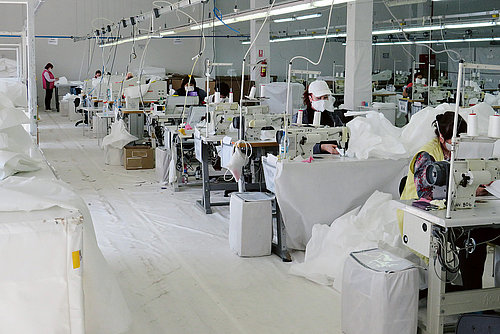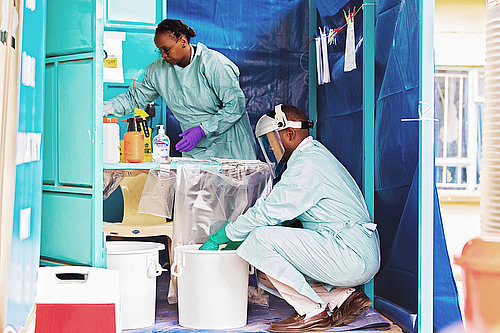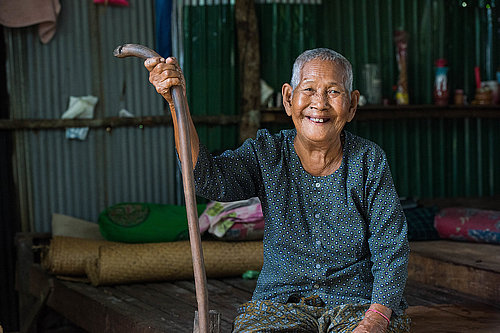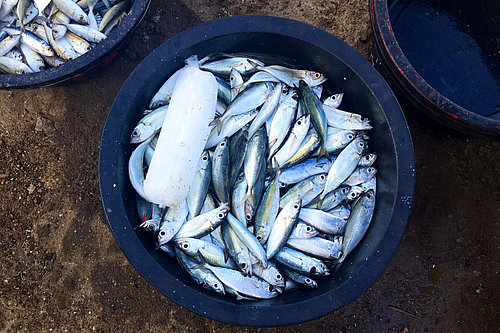Morocco was an early adopter of wind and solar energy – partly due to its lack of fossil energy resources. However, the country quickly realised that it had ideal conditions for alternative energy: long hours of intense sunshine and strong and steady wind on the Atlantic coast. That is why Morocco – with its range of large-scale wind and solar energy farms – is already on the way towards its energy transition.
And now the country is taking a further step forward as it seeks to launch the next round of its energy transformation by producing green hydrogen (H2). Commissioned by BMZ and with funding from KfW, Morocco is planning to build the first high-volume production facility for green hydrogen in Africa. This will enable the country to add another source to its existing renewable energy capacity. Hydrogen obtained in this manner could be used in two ways: to create green ammonia for the fertiliser industry, which is already an important sector in the Moroccan economy, or to manufacture other green power-to-X products such as synthetic fuels made using renewable energy.
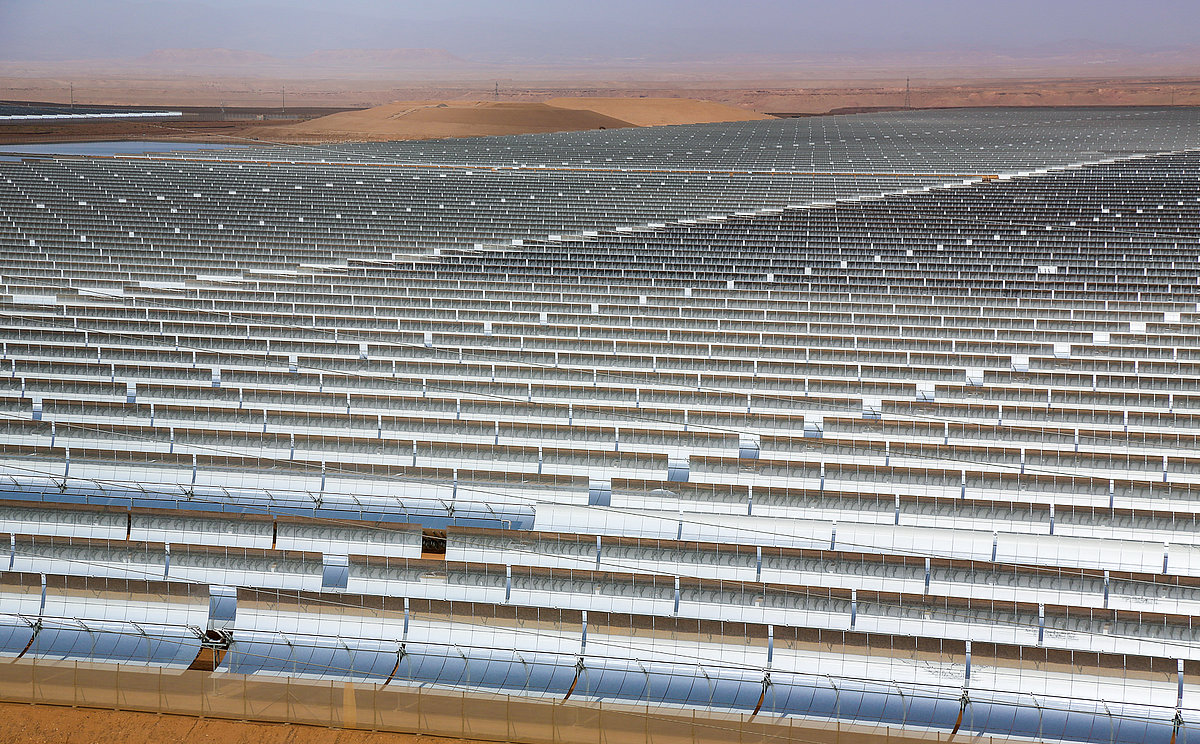
Green, not grey, hydrogen
Hydrogen is considered to be an important element in achieving the goal of climate neutrality by the middle of the century, as envisaged in the Paris Agreement. This is because it can be used as an environmentally sound starting point for a raft of industrial processes and products, for example to manufacture ammonia or synthetic fuels. However, it is only environmentally sound if it is green, i.e. obtained using renewable energy. This involves electrolysis, where (clean) electricity is utilised to split water into its component parts: hydrogen (H2) and oxygen (O2). By contrast, production of what is known as grey hydrogen creates CO2, which is subsequently released into the atmosphere, exacerbating climate change. That is why the specific process chosen to produce hydrogen is crucial. It makes sense to draw on green hydrogen wherever direct use of renewable electricity is not efficient – for example in ships, aircraft and heavy goods vehicles that cannot be electrified.
Power-to-X (PtX) refers to processes where electricity is converted into fuels, raw materials for industry or other forms of energy. Manufacture of PtX products begins by using electricity and water to make pure hydrogen. If CO2 or other carbon compounds are added, other synthetic fuels and basic chemicals, such as methanol or kerosene, can be manufactured. This process is only carbon neutral if the electricity is generated from renewable energy sources and if the CO2 is taken directly from the atmosphere or is based on renewable raw materials. If this is the case, the PtX products can be said to be green.
Green hydrogen is taking centre stage in cooperation in the field of energy
GIZ is supporting the country on this exciting journey into a new energy era. This will also help its green recovery after the COVID-19 pandemic, with the focus on taking a ‘recover forward’ approach. As part of the German-Moroccan Energy Partnership, which GIZ manages, a study on the potential of power-to-X in Morocco was commissioned by the German Federal Ministry for Economic Affairs and Energy (BMWi) and a possible roadmap for developing a green hydrogen economy was drawn up. This reinforced the country’s decision to back green H2 and contributed to the development of a national green hydrogen strategy. Green hydrogen has now become the focus of cooperation in the energy sector.
The work done within the Energy Partnership has spurred on the plans of other commissioning parties. On behalf of BMZ and BMU, GIZ is implementing other projects to develop a sustainable green hydrogen industry with Morocco. The country’s high ambitions for its energy transition could also benefit Europe and Germany one day: the kingdom has the potential to become one of the biggest exporters of hydrogen and power-to-X products. Its geographical proximity to Europe is an advantage in this regard.
Leading the field in Latin America
With the support of GIZ, Chile also adopted a national green hydrogen strategy in November 2020, the first country in Latin America to do so. GIZ started working on H2 in Chile on behalf of BMU back in 2014. The Andean nation is one of the flagship countries in terms of energy transition: as much as 44 per cent of its electricity came from hydropower, solar energy or wind power in 2020. Now it is once again living up to its reputation as a pioneer by aiming to become a major producer of green hydrogen. It has been supported in this since 2019 by the Energy Partnership Chile-Alemania, which GIZ coordinates on behalf of BMWi.
H2 would be used locally – primarily by industry – but it could also be used to produce green ammonia for the mining industry and green methanol for the transport sector. Mining traditionally plays an important role in Chile’s economy. However, since it is an extremely energy-intensive industry, a switch to green energy would make a key contribution to combating climate change. A GIZ analysis ascertained that the energy and industrial facilities needed for the production and use of green H2 could trigger the creation of almost 100,000 new jobs.
Chile’s potential to produce green hydrogen is so great that it will be able to export it or its derivatives such as ammonia and methanol to Asia, Europe and the United States – with a view to rolling out the energy transition worldwide.
We have extensive natural resources in Chile that we can use to produce electricity very cheaply. We also have global free trade agreements and an open economy. […] Green hydrogen will make a contribution of over 20 per cent to the emissions reduction we need to be carbon neutral by 2050. I would like to take this opportunity to thank GIZ once more for supporting us throughout the entire process of developing our green hydrogen strategy, especially with regard to all aspects of regulation.

(© Chilean Ministry of Energy)
Our activities in Morocco:
Our activities in Chile:
Our projects in the 2020 Integrated Company Report
Do you want an overview of all the projects in the 2020 Integrated Company Report? Select a project below:
- Bosnia and Herzegovina: a magnet for adventurous tourists
- Brazil and Mozambique: going digital
- Democratic Republic of the Congo: a prescription for better health
- Global: a new digital era
- Global: artificial intelligence for all
- Global: centres for digital transformation
- Indonesia: ice from solar energy
- Cambodia: no one is overlooked
- Latin America: naturally cool
- Lebanon: educational opportunities for all
- Morocco: on track towards the technology of the future
- Moldova: new patterns, new opportunities
- East Africa: fighting infections
- Sierra Leone: radio programme provides support in the crisis
- South Africa: green investing
- West Africa: disease control made in Nigeria
Do you want to learn more about GIZ’s work? You’ll find information about around 1,600 ongoing projects here.

